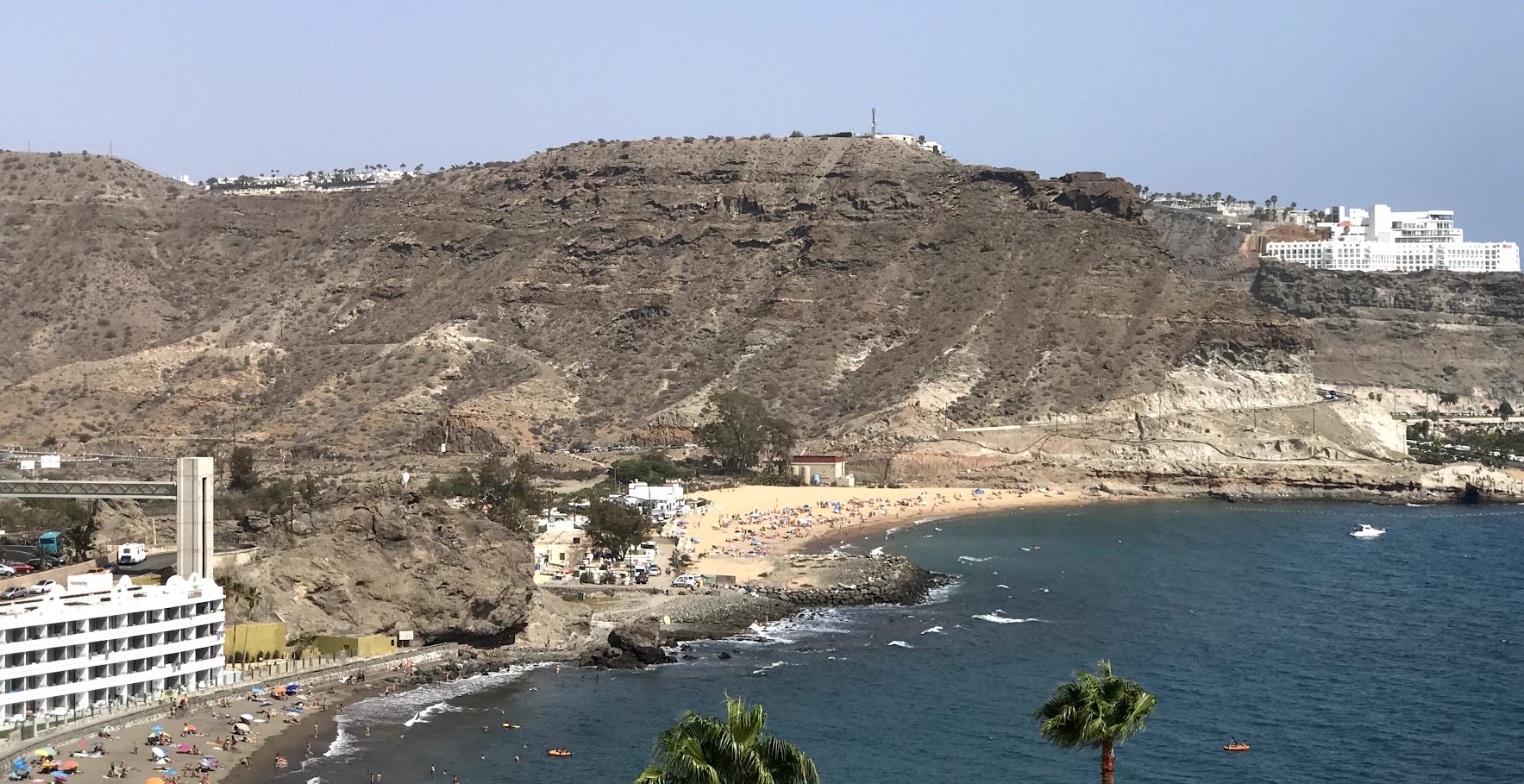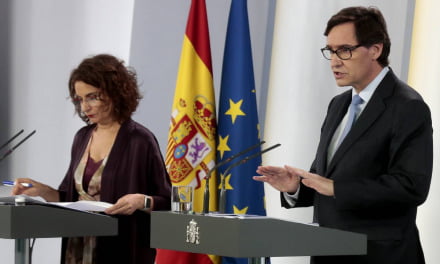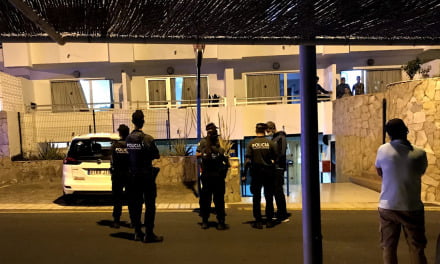The forecasts of the business sector and the Tourism Department of the Government of the Canary Islands, which indicate that the islands will have a good winter, are gaining consistency as November 1, the official start date of the season, approaches, reports Silvia Fernandez in Spanish language daily, Canarias7 this Tuesday.
Over the last week, reservations have grown more than 12% and it is expected that in the coming days the tourism rebound will be higher, in line with the change in trend in tourist habits since covid, in which the purchase of last minute reservations are 23% below 2019 but the gap in the figures is being reduced day by day.
Air connectivity figures have also improved. A few weeks ago, the airlines had 9.4 million seats scheduled for the winter, 30.7% more than in 2019. The latest data raises the seats by nearly 100,000, to almost 9.5 million.
 “Good winter” but it won’t be like 2019
“Good winter” but it won’t be like 2019
The winter will be “good”, said the president of the Federation of Hospitality and Tourism Entrepreneurs of Las Palmas (FEHT), José María Mañaricua, but – he warns – the figures for 2019 will not be matched this year.
Inflation, interest rates and the gas crisis are going to weigh on the decision of many Europeans to travel and this is going to prevent the arrival of tourists from reaching pre-covid levels, as has happened so far this year: Until August 7% less tourism has arrived in the Canary Islands when compared to 2019, which translates into the loss of one million tourists (foreign tourism fell by 9.4% and national/domestic tourism by 4.3%). Gran Canaria is the island that has seen the greatest decrease, after La Palma, with 10.5% fewer visitors.
“Winter is going to be good in the Canaries but it won’t be exceptional. We are not going to reach the figures for 2019,” warned Mañaricua, who points out that expected occupation for November will be 90%. “We are the only winter destination in Europe. Whoever wants to go on vacation can go to Egypt, the Caribbean and the Canary Islands. That is our advantage and it will go well for us, but not as much as in 2019,” insisted Mañaricua.
Tourism sector, optimistic but cautious
An improvement in tourism is being noticed already in this second fortnight of October, once the school holidays have begun in the various European countries, with occupation of 80%, expected folowing a “weak” first fortnight of the month.
“It’s the same as always,” says Mañaricua, who is convinced that the tourism sector will not recover to 2019 levels “until 2024.”
The president of the Tourism Commission from the Gran Canaria Chamber of Commerce, who is also president of Ifa Hotels and director of the Lopesan group, Santiago de Armas, points out that “although the forecasts are good for the coming months”, the high uncertainty has meant that “everything is up in the air.”
“The champagne effect of this summer, and following COVID, is disappearing. Everything looks good but we have to be cautious”, he said.
The general director of Cordial Canarias Hotels & Resorts, Nicolás Villalobos, expressed himself similarly. “The situation is better, although there are still setbacks and scares,” he indicated. “We want to be optimistic and we need it, but the uncertainty is very high,” said Villalobos, who noted that there are two important markets for the islands and especially Gran Canaria, such as the Nordics and the Germans, which are recovering more slowly.
Hotel prices rise 8% but it does not cover the rise in costs
The president of the Federation of Hospitality and Tourism Entrepreneurs of Las Palmas (FEHT), José María Mañaricua, acknowledges that the price of hotels has risen by 8% on average. According to him, prices may have risen in contracts with tour operators – which are closed a year earlier – by between 3% and 4%, while direct sales have become more around 12% more expensive. On average, the increase is 8%.
The rise, however, as Mañaricua points out, does not compensate for the large increase in electricity bills -on average it has been 70% although with peaks that have reached 200%- and gas, with an increase of 25% compared to 2019. To this must be added the increase in prices of all buffet products, in some cases prices have doubled.
“Part of this rise is assumed by businessmen because they cannot raise prices by 20%,” says Mañaricua.
The president of the Tourism Commission and director of the Lopesan group, Santiago de Armas, said that the profitability of establishments is going down because prices do not grow at the same rate as costs.
The general director of Be Cordial Hotels & Resorts, Nicolás Villalobos, added that “business margins” have been affected by rising costs. “Not everything is joy,” he points out.
The latest data from the National Institute of Statistics (INE), writes Andrea Saavedra in LaProvincia, indicate that prices in Canarian hotels registered an 8.59% increase in August compared to 2021, a percentage increase that, according to local business people, was maintained through September and October. “The increases have been between 5% and 8%, but they are still well below the costs,” said the president of the Federation of Hospitality and Tourism Entrepreneurs of Las Palmas (FEHT), José María Mañaricua.
According to INE data, the increase in prices in accommodation on the Islands is lower than the national average, which in August registered a 13.32% year-on-year variation. “Since the summer we have been able to begin to affect the increase in costs we have suffered since the beginning of the year, thanks to the fact that demand began to be more powerful,” acknowledged Mañaricua. The average daily rate in the Archipelago in October 2021 was €110.06, and currently, with an almost 9% increase, the price has reached €120 per night, €10 more than just a year ago. By province, the cost in Las Palmas has gone from €105 to €114 per day and in Santa Cruz de Tenerife from €118 to €128.
Caution ahead of rising prices for 2023
This increase, according to the sector, is “quite moderate” and only covers “a part” of the increase in costs. “We believe that we will earn less, but what we want is to have full hotels,” acknowledged the president of the Fuerteventura tourist association (Asofuer), Antonio Hormiga, who assured that the rise in prices on the Islands is much “more contained” than in the other parts of Spain. For the president of the FEHT, it would be necessary to raise “the rates much more” to cover all the costs in the hotels, but he recognises that most companies are cautious because this could put the growing demand in the industry at risk. “Extravagant increases cannot be made because we could have problems with employment,” says Mañaricua, who is concerned that the rise in inflation is also having an impact on families’ ability to earn income.
“We are already seeing how, instead of contracting ten-day trips, visitors reduce their stays to six days because their savings are lower due to the global economic situation,” says the businessman. The employers also assure that the 9% increase in the Canary Islands has been applied only to direct sales because the 50% contracted through tour operators has suffered a smaller increase, of between 3% and 4%. “These are packages bought a long time ago, a year ago even, so the price increase is much lower,” clarified the president of the FEHT.
Despite the context of uncertainty and the increase in costs, the sector looks to the future with optimism as visitors continue to be interested in the Islands. “We are going to have a good winter, because together with Egypt we are the only destination that offers sun and beach at this time of year,” explained Mañaricua, who assures that even in times of crisis the winter months are “good” for the sector. The president of the tourist association in Fuerteventura also sees it this way. “The data tells us that very good months await us, where we are even going to exceed the figures from before the pandemic,” says Hormiga, who acknowledged that despite the positive predictions he will not “sing victory until he sees the figures at the end of year”.
The truth is that the Archipelago was the only Spanish destination that managed to exceed the levels of international air passengers in 2019 during the month of August, with a total of 1,047,912 travellers, according to data published by Turespaña based on Aena records. This figure already represents growth of 1.7% compared to the same month of the year prior to the pandemic. With these figures, the Canary Islands have positioned themselves as the fourth autonomous community for the most foreign passenger arrivals by air. The Islands registered 11.6% of the total arrivals to Spain during the eighth month of the year, a period in which the country received nearly nine million international tourists by air.
The tourism sector in the Archipelago has been overcoming difficulties for so many years that it is not surprising that, despite the latest good figures, the steps towards the future are being taken with leaden feet . “The effects of the crisis we are experiencing have not yet arrived, we will see it in 2023 when the rise in energy and interest rates have a real impact on companies and family economies,” warns Mañaricua.










